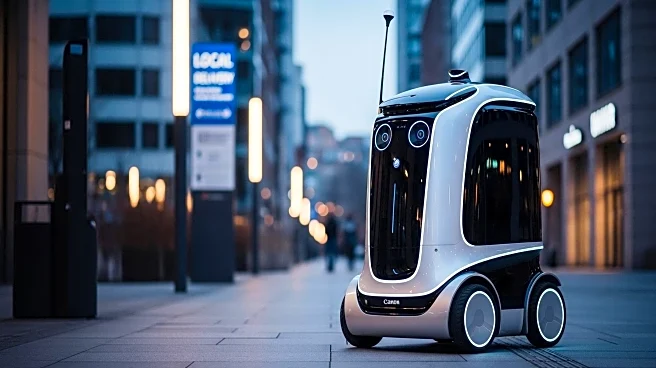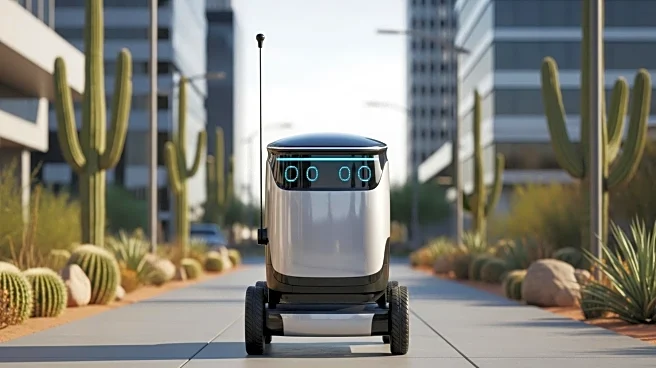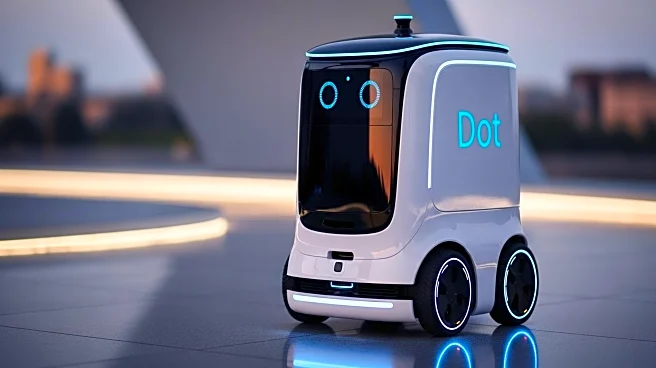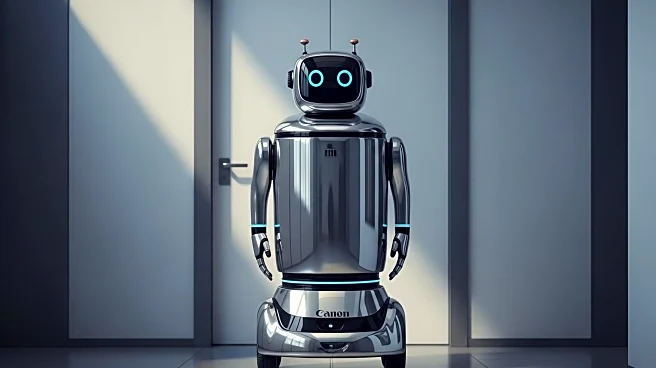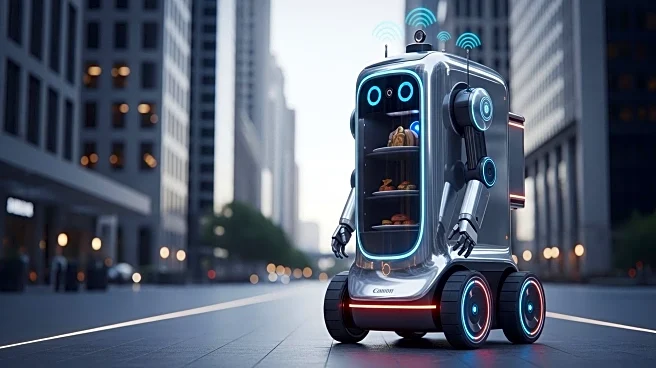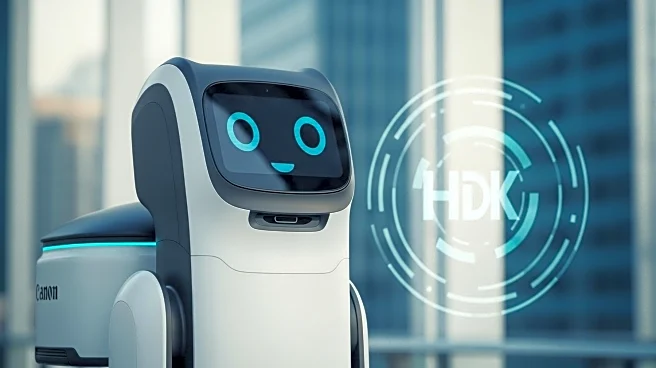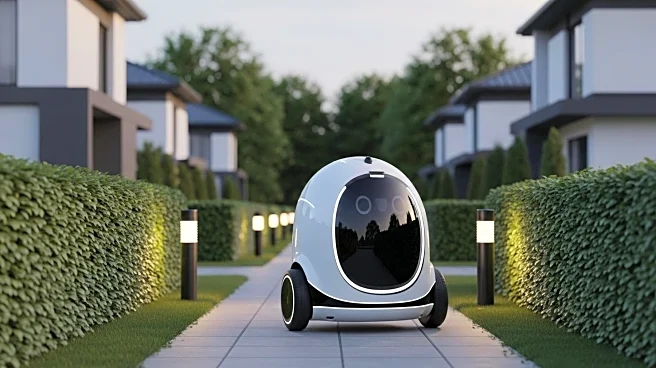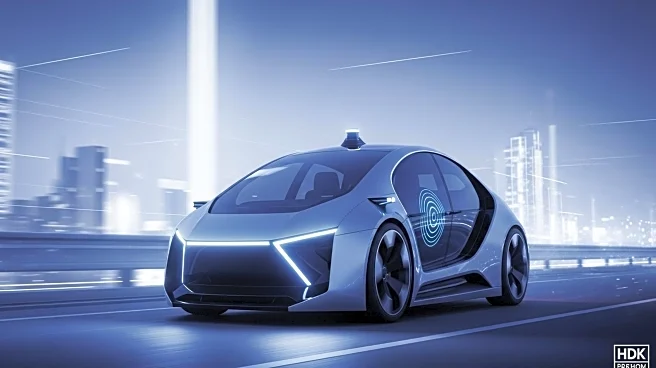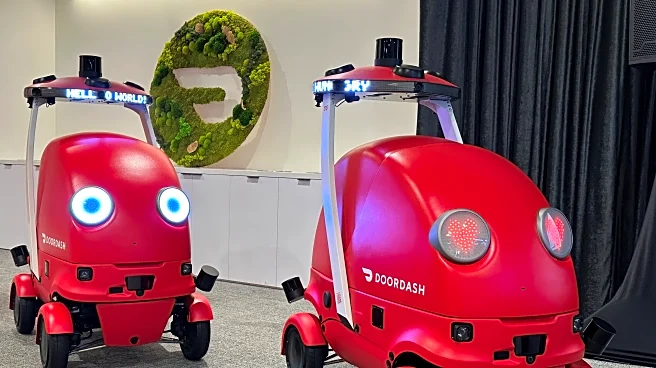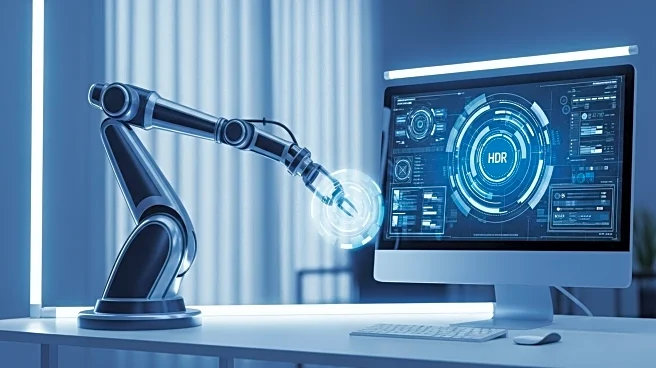What's Happening?
DoorDash has introduced Dot, its autonomous delivery robot, as part of a broader strategy to integrate autonomous vehicles into its delivery network. Dot is designed to operate on sidewalks, bike lanes, and roads, navigating complex urban environments to pick up and deliver food. The robot is equipped with advanced perception technology and can travel at speeds up to 20 mph. Despite the potential benefits, the delivery robot industry has faced challenges, with companies like Amazon and FedEx abandoning their projects. The remaining players, such as Starship Technologies, have focused on smaller deployments, primarily on university campuses. The slower growth in delivery robots compared to autonomous vehicles is attributed to the complexity of the problem and limited capital.
Why It's Important?
The launch of Dot highlights the ongoing efforts to automate delivery services, which could significantly impact the logistics industry. Autonomous delivery robots offer a solution to reduce human contact, especially during health crises like the Covid pandemic. However, the industry faces hurdles, including technological challenges and public acceptance. The success of Dot could influence other companies to invest in similar technologies, potentially reshaping the delivery landscape. For DoorDash, the integration of autonomous robots could lead to cost savings and increased efficiency, but it also poses risks related to public perception and regulatory compliance.
What's Next?
DoorDash's deployment of Dot in Arizona is a test case for the viability of autonomous delivery robots in urban environments. The company may expand the program to other cities if successful, potentially influencing industry standards and regulations. Stakeholders, including local governments and businesses, may need to address infrastructure and safety concerns related to the operation of delivery robots. The outcome of DoorDash's initiative could determine the future direction of automation in the delivery sector.
Beyond the Headlines
The introduction of autonomous delivery robots raises questions about the future of employment in the delivery industry. As automation becomes more prevalent, there may be discussions about the displacement of human workers and the need for retraining programs. Additionally, the use of AI and robotics in public spaces could lead to debates about privacy and data security. The cultural acceptance of robots in everyday life may evolve as they become more integrated into urban environments.

